
 October 8, 2025 "Lake Winnibigoshish Free Range, Grass Fed, Walleye, Perch and Pike"
October 8, 2025 "Lake Winnibigoshish Free Range, Grass Fed, Walleye, Perch and Pike"
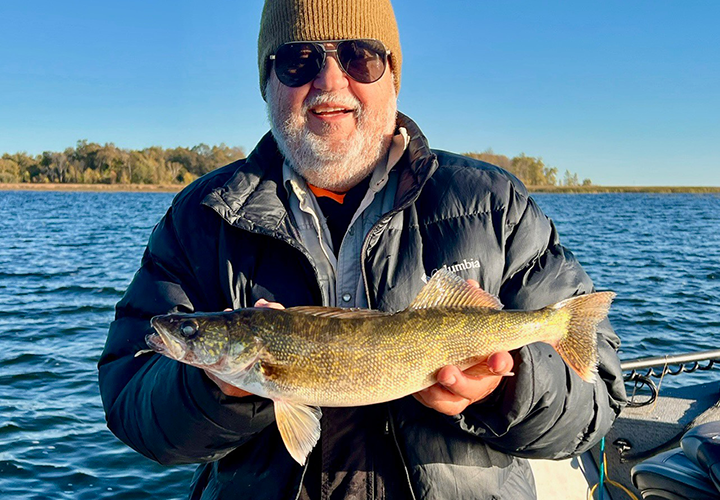 After getting our butts handed to us by the windstorm last Sunday, Tuesday’s frosty morning air felt better. Even if I couldn’t feel my fingers tying the jig on my line, at least I could stand up without having my whiskers blown off.
After getting our butts handed to us by the windstorm last Sunday, Tuesday’s frosty morning air felt better. Even if I couldn’t feel my fingers tying the jig on my line, at least I could stand up without having my whiskers blown off.
Cruising along Winnie’s western shoreline to our starting spot, I watched my graph to observe the surface temperature. Averaging 61 degrees, I was hoping that the water was still warm enough for the fish to be active. Hoping too that the light chop on the surface would be enough to offset the bright sunshine, I stopped at the first spot that offered a good drift. A shallow, 5-to-7-foot breakline, adjacent to a large flat that has mixed patches of wild celery, clasping leaf pondweed and other vegetation. I set up drift, using 1/8 ounce jigs and fatheads, and focused on the deeper, 7-foot portion of the breakline.
The boat was quiet, neither I nor Ken had much to say. I think we were both silently wondering if the slow start was setting the stage for a tough day of fishing. The elapsed time was probably only 15 minutes or so, but the lack of action made it feel like hours. Thankfully, one of us got a bite, and then the other and before long we’d boated a few walleyes. The first, a 13 incher was rejected, but the next 2-, 14- and 15-inch fish were dropped into the livewell. A couple more small ones were released, and then a small school of keeper size perch kept us busy for a time.
The reason for the sudden pick up in action was that I stopped working the deeper breakline edges and allowed the boat to drift shallower, on top of the 5-foot deep weedy flat. It appeared that the vegetation was more important than the breakline, or so-called “structure” for finding and catching fish. I was happy that we were catching perch, but the mission to get Ken some walleyes was the priority and they had now disappeared. So, we made a move, heading for another weedy shoreline flat.
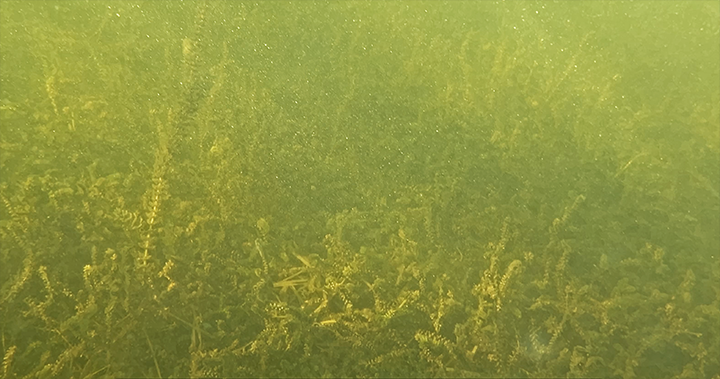 My second stop didn’t work out well, we were fishing on the protected shoreline, and the surface was flat calm. Here, the fish were hunkered down, and unwilling to move out of the grass to strike. There may have been a way to fix that, but at the time, I didn’t think of it; I’ll come back to that thought in a few minutes.
My second stop didn’t work out well, we were fishing on the protected shoreline, and the surface was flat calm. Here, the fish were hunkered down, and unwilling to move out of the grass to strike. There may have been a way to fix that, but at the time, I didn’t think of it; I’ll come back to that thought in a few minutes.
As I moved down the shoreline, I wasn’t heading for any specific spot. Instead, I watched for any area with larger waves breaking the surface. My only consideration was to find a “drift-able” breakline adjacent to a grass covered, shallow water flat. I spotted on, stopped there and set up for another drift. This time holding my boat in shallower, 5- to 6-foot-deep water, I mentioned to Ken, “sometimes the fish sit higher on topo of the bar, try casting your jig up into the shallower water and working it back out toward the breakline.” He did, and it worked, a nice keeper walleye, followed by a variety of others, were added to our larder.
As we drifted through the area, the walleyes made it clear to us that out was vegetation, not structure, that they preferred. I’d go so far to say that if we weren’t tickling weeds, then we wouldn’t catch fish, not only walleyes, but any fish. Perch, pike and walleyes were sharing the weeds for cover, and so were the forage fish they were feeding on. Almost any patch of grass I could find had a few fish in them, albeit not always the fish we hoped for.
By midafternoon, we’d sorted out 6 nice walleyes, 15 to 17-1/2 inches long for Ken. For me, smaller fish from 14 to 14-1/2 inches would be utilized for a fish fry, scheduled with my crew and the Hippie Chick for later today. “Let’s go try that spot where we caught those nice perch last year”, Ken said. I agreed but wanted to first check out a couple spots along the way. After those spots failed to produce the desired results, we moved to Ken’s requested spot. A shallow backwater flat that features even heavier weeds than those we’d been fishing.
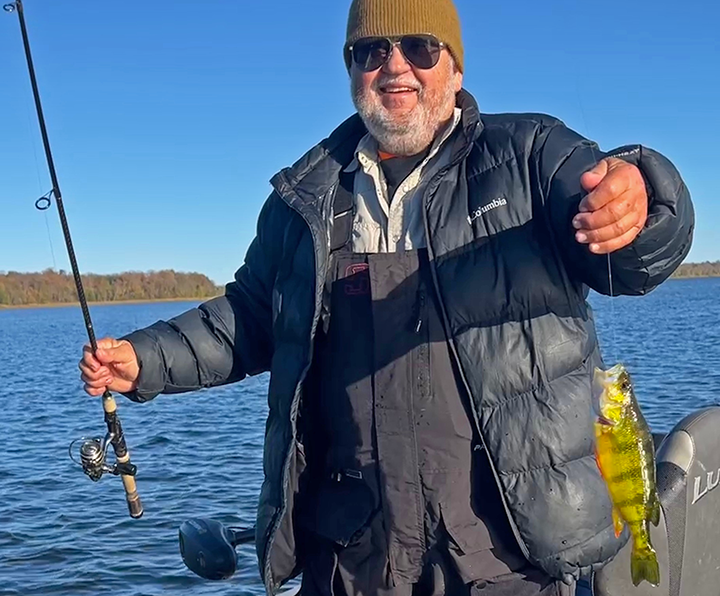 Upon arrival, we set up a drift along the shallow breakline. In the heavy weeds, moving our lures through the cover was difficult. Being snagged constantly forced us to fish fast, jigging a lot to keep the baits free of weeds. Perch, mostly small ones, picked at the tails of the minnows, rarely getting hooked, but frequently stripping the minnows from our jigs.
Upon arrival, we set up a drift along the shallow breakline. In the heavy weeds, moving our lures through the cover was difficult. Being snagged constantly forced us to fish fast, jigging a lot to keep the baits free of weeds. Perch, mostly small ones, picked at the tails of the minnows, rarely getting hooked, but frequently stripping the minnows from our jigs.
“Do you have a bobber in this boat?” Ken inquired. “Sure I do”, I replied as I began searching for them. Ken clipped on a 1 inch foam float, about 3 feet above the jig and minnow. Suspended ovber the weed tops, the slower, more deliberated presentation worked well. In fact, if there had been more large perch on the flat, I would have said it was fantastic. Little perch, 5 to 7 inches long dominated the action, but every so often, Ken picked up a keeper. It worked well enough for me to wonder if the bobber trick would have helped us in the calm spot I mentioned earlier, stop number 2.
Okay, so that’s the Winnie update, limited as it is, from Tuesday. My takeaway, for the areas we fished was simple, no weeds = no fish! That said, we did not fish any water deeper than 7 feet because we didn’t need to. The forecast for today may require more creativity, a calm, southerly breeze is forecast to replace the brisk northwest wind. So, under sunny skies and a calmer surface, fishing deeper water may be necessary. As always, you can count on me to let you know tomorrow, so please tune back in for that. ![]() — Jeff Sundin, The Early Bird Fishing Guide Office Cell Call or Text 218-245-9858 or Email on Facebook on X
— Jeff Sundin, The Early Bird Fishing Guide Office Cell Call or Text 218-245-9858 or Email on Facebook on X
 October 7, 2025 "Settling the Settle-Able: Post Cold Front Panfish"
October 7, 2025 "Settling the Settle-Able: Post Cold Front Panfish"
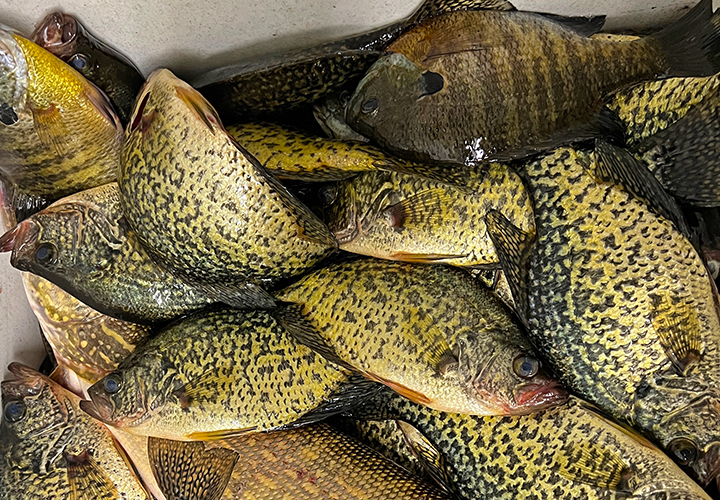 In the aftermath of Sunday’s blast of cold air rushing into north central Minnesota, I observed panfish moving, but not far away from their summertime habitats. Early fall locations that were void of fish last week, were now filled with fish, albeit less active than I’d have liked.
In the aftermath of Sunday’s blast of cold air rushing into north central Minnesota, I observed panfish moving, but not far away from their summertime habitats. Early fall locations that were void of fish last week, were now filled with fish, albeit less active than I’d have liked.
The moderate, 1000-acre lake we visited is known as a mixed species lake. There are decent numbers of walleye, bass, crappies and sunfish. When we arrived at the landing, I was surprised by the warm surface water. The temperature, 65 degrees, was a contrast from the mid-40-degree air and felt warm to the touch. It made me hopeful that fish would remain active, despite the sharp dip in overnight air temperatures. There was still a stiff wind from the west, and I hoped that the “walleye chop” on the water would be helpful as well.
My crew, like most of my customers, hoped to catch some walleyes, and we tried them in several spots and using several presentations. Along the way, we discovered that whether we jigged, wiggle-wormed, or trolled spinners, walleyes were the only fish we couldn’t catch. Randy caught the single lonesome walleye, a 14 incher, that struck a spinner tipped with a fathead.
Conversely, largemouth bass, northern pike, perch, crappies, sunfish we all willing to strike. So, seizing the opportunity, crappie fishing became my plan b for this lake. At first, I imagined catching then quickly, and making a short drive over to Lake Winnie to target walleyes. The project wound up taking all day long, so for a number of reasons, the move to Winnie didn’t happen on Monday.
Adjacent to shallow structures like weedy flats, shoreline points and shallow sunken islands, crappies and bluegills were stacked up. Most fish were suspended, holding 8 to 15 feet below the surface, over about 25 feet of water. Some schools of fish were large, some were small. Some schools of fish were tightly gathered and some were loosely formed. No matter how many fish I located in any one spot, only a small portion of them relative to the overall size of the school would strike. So, while we ended the day with full limits of crappies for my crew, the intensity of action was moderate.
Presentations for panfish vary, but for me, holding the boat steady in the whitecaps was tricky. For my crew, finesse methods like vertical jigging were tricky too, feeling strikes, and matching the depths of suspended fish was right complicated. An experiment with trolling spinners over the suspended fish provided some positive results. I don’t believe that it was the most efficient way to catch crappies yesterday, but it worked. We’d pick off a few fish as we passed over the scattered schools of fish. It was an easier way to stay in contact with ours lures, so I stuck with it to catch panfish.
The bass and northern pike were more responsive to jigs and minnows. Fishing the weed edges in 9 to 12 feet of water, we caught numerous small bass, along with a few larger ones. Northern pike, mostly small were in the same territory, one of them, a 31-inch fish came boatside for Tony. Perch were plentiful, but too small to interest us and like I said, walleyes had the lock jaw.
I’m at the end of my time in the office, and need to get out of here. But I have some notes from friends who fished on Lake Winnie yesterday. That’s where I’m headed now, and I’ll have that report for you tomorrow morning. In the meantime, if you were fishing for crappies, sunfish or bass in the weeds last week, try checking the deeper structure located immediately adjacent to those locations. Let me know if that pattern works for you. ![]() — Jeff Sundin, The Early Bird Fishing Guide Office Cell Call or Text 218-245-9858 or Email on Facebook on X
— Jeff Sundin, The Early Bird Fishing Guide Office Cell Call or Text 218-245-9858 or Email on Facebook on X
 Wired2Fish "Bass Fishing’s Boy Wonder: The Meteoric Rise of Trey McKinney"
Wired2Fish "Bass Fishing’s Boy Wonder: The Meteoric Rise of Trey McKinney"
 "“You gotta pay your dues.” That once was an unwritten rule in the world of professional bass fishing. The old pros would say, “It takes time before you can work your way to the top of the game.”
"“You gotta pay your dues.” That once was an unwritten rule in the world of professional bass fishing. The old pros would say, “It takes time before you can work your way to the top of the game.”
But Trey McKinney apparently never got that message. At age 20, he already is accomplishing things anglers twice his age haven’t.
What’s With This Kid? Just eight or nine years ago, he didn’t know much about tournament bass fishing and seemed destined to follow in his parents’ footsteps as rodeo barrel racers. But his love for bass fishing led him on a different path. He was brought up in southern Illinois, not exactly a hotbed for bass fishing. But he credits his childhood days with teaching him important lessons about how to catch big largemouth. “We have mostly small lakes in the area where I grew up (in Marion, Ill.) ,” he told Wired2fish. “What I learned most is how to ..." Read Full Article and Learn More >> Bass Fishing’s Boy Wonder: The Meteoric Rise of Trey McKinney
More Recent Fishing Reports
Follow on X • Follow on Facebook • Crappies 10-7 • Lake of the Woods 10-7 • Fall Turnover 10-6 • Sundin 10-5 • Lake Winnie 10-4 • Fall Turnover 10-2 • Ely MN 10-01-25 • L.O.W 10-01-25 • Sunfish 09-26 • Northern Pike 9-25 • Sundin Report 09-24 • Winnie Walleye 9-23 • Crappies 9-22 • Winnie Walleye 9-21 • Bowen's 9-19 • Sundin 9-16 • Winnie Walleye 9-14 • Fun With Dick & Paul 9-12 • Crappies 9-11 • Lake Winnie 9-10 • Lake Winnie 9-7 • Sundin 9-6 • Sundin 9-5 • MN DNR 9-4 • Sundin 9-4 • Walleye Limit 7-01 • Radomski On Walleye Limits • Don't Land A Citation 5-1 • 200 • MN DNR Rule Changes 02-13 • MN Hall of Fame 01-24 • Charts 1-23-25 • MAPS 1-22-23 • Barotrauma Study 1-25-24 • Fish Consumption • Forward Sonar • Panfish Workgroup
 Lake of the Woods, LOW Tourism, October 7, 2025
Lake of the Woods, LOW Tourism, October 7, 2025
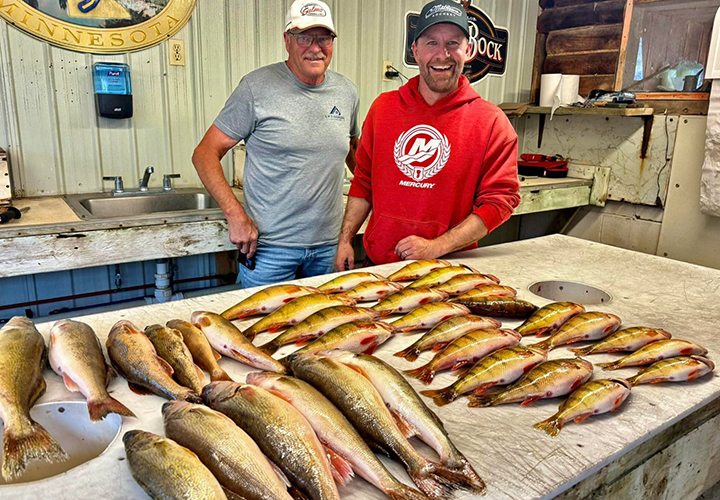 "Walleyes are stacking up along the south shore of Lake of the Woods. Various schools of walleyes are located across the south shore in areas such as Pine Island, Lighthouse Gap, Morris Point, Zippel Bay, Long Point, and Twin Islands. All year long, walleye anglers have been catching good numbers of bonus jumbo perch. The lake is full of them and that trend continues.
"Walleyes are stacking up along the south shore of Lake of the Woods. Various schools of walleyes are located across the south shore in areas such as Pine Island, Lighthouse Gap, Morris Point, Zippel Bay, Long Point, and Twin Islands. All year long, walleye anglers have been catching good numbers of bonus jumbo perch. The lake is full of them and that trend continues.
Weather has been unseasonably warm and water temps are holding in the low 60's. Despite the "summer like" weather, days are getting shorter and this is kicking fall patterns into gear. Additionally, more traditional fall temps are in the forecast and this too will turn the walleyes on even more.
The best bite this week has occurred in 17 to 27 feet of water. Vertical jigging with a frozen emerald shiner this time of year is definitely the goto presentation, however, those trolling crankbaits are still having good success.
Hot jig colors. Lake of the Woods has stained water from the natural tannins in the water. This causes the walleye and sauger bite to be good during the day. Stained water is also conducive to certain colors, specifically gold or gold combined with other bright colors such as orange, chartreuse, pink, and glow white.
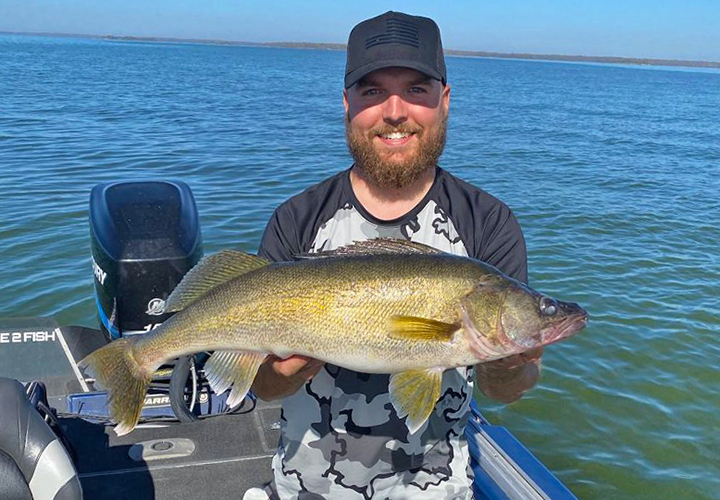 Emerald shiners continue moving into the Rainty River and walleyes are following close behind. The bite is good, but cooler weather and water temps will kick things into high gear. A jig and frozen shiner along current breaks, deeper holes, and sand flats.
Emerald shiners continue moving into the Rainty River and walleyes are following close behind. The bite is good, but cooler weather and water temps will kick things into high gear. A jig and frozen shiner along current breaks, deeper holes, and sand flats.
Sturgeon action remains good. A classic sturgeon rig with crawlers (optionally tipped with a shiner) has been effective. The sturgeon catch-and-release season is upon us and continues through April 23, 2026. The Rainy River offers about 42 miles of navigable water from Wheeler’s Point through Baudette to Birchdale, with numerous public ramps for access.
At the Northwest Angle, walleye fishing is just flat out good right now! Actually, it has been all summer long. Anglers find good fishing on both sides of the border. Again, a jig and minnow on points, over reefs, neck-down areas, and mud-to-rock transitions. Saugers, jumbo perch, crappies, smallmouth bass and pike are in the mix. Fall crappie anglers are reporting nice catches.
A jig and minnow off of points and in deeper water off of structure. Electronics help to find the crappies. Muskie activity traditionally increases as days get shorter and water cools. We have one of the two and things will only get better into the rest of October.
Get in on a last minute fall trip and plan for ice… Charter boats and guides are rolling through October, a few into November. Fishing is excellent and now is a great time to slide up." — Lake of the Woods Tourism, (800) 382-FISH
 October 6, 2025 "Turning the Turn-Able"
October 6, 2025 "Turning the Turn-Able"
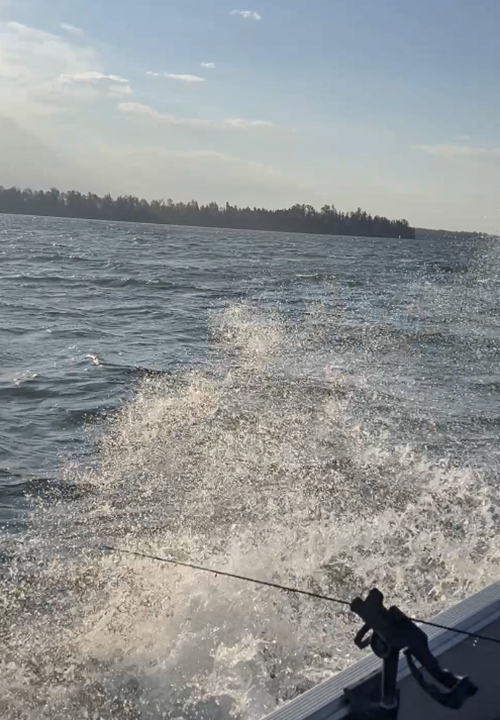 Turnover in natural lakes, an often misunderstood occurrence is in the news, again.
Turnover in natural lakes, an often misunderstood occurrence is in the news, again.
You know that the “teasers” I post on Facebook are not full reports right? What they are, are reminders that a new report has been posted to either fishrapper.com or jeffsundin.com. Typically, there’s a paragraph or two aimed at giving readers an idea of the information contained in the full article. At the end of the “teaser”, there’s a link that leads readers to the full report.
Okay, so when a reader follows the link, and then reads the full report, they find more links, ones that allow them to contact me directly via email, texts and the like, with their comments. I love it when folks take advantage of those, comments, questions, advisories, whatever, I love them all. So, I think you can understand what I’m hoping will happen.
The problem with using so-called social media is that often, folks react to a teaser, or to an image without taking the time to digest the full content of an article. When that happens, they sometimes offer a knee-jerk reaction that is taken out of context by other “social” media users who also do not read the full article; and that’s bad. It’s bad because then I, or somebody, has to go back and repair whatever damage is done by repeating someone’s mistaken, or ill thought through public commentary.
Okay, so the repair job I’m working on this morning concerns the topic of turnover in natural lakes. The topic, often covered, but seldom covered accurately comes up every fall and it should. It should because the impact on fishing before during and after a lake turnover affects where, when and how we fish.
On October 2, 2025, on Fishing Reports Minnesota, I “teased” readers with “Sundin: "Surface water temperatures held steady at about 65 degrees on Wednesday. Thoroughly mixed from top to bottom by the constant churning, the water was “turned over” in most of the lake’s littoral areas. The term littoral refers primarily to a lake’s shallower shoreline regions but could also include shallow mid-lake flats and bars. For Lake Winnie, this means that about 19,000 acres of water was mixed, or “turned over” by yesterday’s turmoil. Fish in those areas will ..." Read Full Update >> October 2, 2025 "Turning the Turn-Able"
A reader comment, responding to that “teaser” says; “Turn over happens when the beeper water (typically 39 F or 4 C waters densities temp) and the top of the water becomes the same temperature. That makes there densities the same and they can mix. Wind camp speed that up but I am pretty sure with temp in the 60s turn over is a ways out.”
The comment, misspellings aside, is technically, but only partially correct. First, there was no claim that that Lake Winnie had completely “turned over”, even without reading the full article, any reader can clearly see that the article says, “Thoroughly mixed from top to bottom by the constant churning, the water was “turned over” in most of the lake’s littoral areas.” It goes on to advise, “For Lake Winnie, this means that about 19,000 acres of water was mixed, or “turned over” by yesterday’s turmoil.”
There is more than one kind of turnover, and they occur multiple times every season. While the reader was technically correct about the final, thermal turnover that happens during late fall, or early winter, there are also other turnover events that occur at random intervals and may impact only certain regions, portions of a lake, or some isolated lakes in a region, while others remain unaffected.
Would you enjoy more information about what these turnovers are, why they occur, and how they affect your fishing? Then follow this link to the article, “Fishing the Fall Turnover in Natural Lakes”. If after reading the full article, you have more questions about what turnover is, and how it occurs, let me know and I’ll provide you with additional updates.
OH! And it happened again on Sunday. Waves crashing over the side of my boat, whitecaps rolling across shallow flats, northern milfoil plants floating free across the entire lake. Fishing in the aftermath of yesterday’s wind storm will be the subject of tomorrow’s report. ![]() — Jeff Sundin, The Early Bird Fishing Guide Office Cell Call or Text 218-245-9858 or Email on Facebook on X
— Jeff Sundin, The Early Bird Fishing Guide Office Cell Call or Text 218-245-9858 or Email on Facebook on X
 October 5, 2025 "Chilling the Chill-Able"
October 5, 2025 "Chilling the Chill-Able"
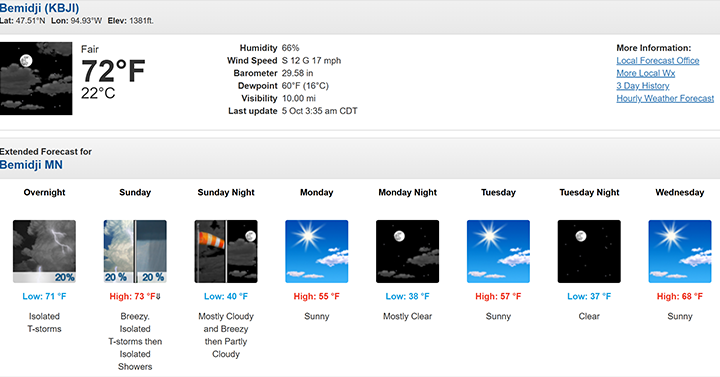 The recent dialogue, focused on unusually warm weather, and non-typical fishing patterns is about to change. A cooling trend is on the way, and despite the image of this calm, morning fog near Max Minnesota, it’s gonna be a turbulent day on the lake. Today’s forecast calls for strong winds, gusting up to 40 MPH, driven by cold air. Tomorrow’s overnight low is projected to be 30 degrees lower than today’s 71 degree reading.
The recent dialogue, focused on unusually warm weather, and non-typical fishing patterns is about to change. A cooling trend is on the way, and despite the image of this calm, morning fog near Max Minnesota, it’s gonna be a turbulent day on the lake. Today’s forecast calls for strong winds, gusting up to 40 MPH, driven by cold air. Tomorrow’s overnight low is projected to be 30 degrees lower than today’s 71 degree reading.
The full impact on surface water temperatures remains to be seen but impacted they will be. Currently, 64 to 69 degrees is a fair estimate of what you’d find this morning on north central Minnesota lakes. My guess is that within the week, we’ll see readings fall into the high 50s on shallow water lakes, and low 60s on deeper ones, more capable of retaining warmth.
Despite warm weather, we’ve already seen some fish transitioning into fall feeding patterns. So, the real impact on fishing patterns will be more dramatic on some lakes than it will on others. Deeper water lakes with vegetation like cabbage, coontail and eelgrass that hold baitfish now, may undergo a robust transition as cooling water forces minnows and baitfish toward the outer edges of the weeds. Anglers fishing these lakes could notice an uptick in walleye, crappie and perch feeding activity.
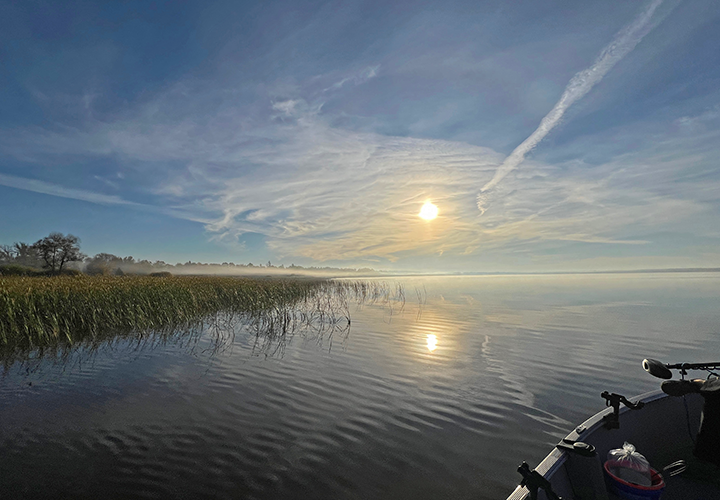 Conversely, vegetation in shallow lakes, home to more delicate vegetation like northern watermilfoil, filamentous algae and other pondweed varieties have changed a lot already and may seem less dramatically impacted.
Conversely, vegetation in shallow lakes, home to more delicate vegetation like northern watermilfoil, filamentous algae and other pondweed varieties have changed a lot already and may seem less dramatically impacted.
During my fishing trip with Dale and Colten on Friday for example, I found myself attempting to find a large patch of northern watermilfoil that had completely disappeared. That’s right, a depression, or so-called hole, located on a large flat was previously surrounded by shallow weed growth just one week ago. Last week, I reported about the experience in my reports, and you can read the full (September 25, 2025) article if you like. On Friday, (October 3, 2025), that entire weed bed was gone, and the fish were gone too. Except of a couple of small pike, the hole had been completely vacated.
Jeff, how is this possible, you’re asking? Well, weeds like the northern milfoil grow on expanses of shallow, sandy flats. Even if the weather has been warmer than usual, it doesn’t stop submerged plants from maturing. So, once they mature, and begin to die off, any strong wind can come along and uproot them. That’s what happened last Wednesday during the huge turnover triggered by strong and gusty south winds.
To find fish on Friday, I had to move to the other side of the lake, the southern shorelines that were protected from Wednesday’s south winds. There, we discovered weeds, and in the weeds, we discovered fish. Walleyes, perch and even pike were active, but scattered. To catch them, I needed to cover a lot of territory, but once found, they struck willingly. That signaled me that fish are hungry, and in their “fall feeding mode”.
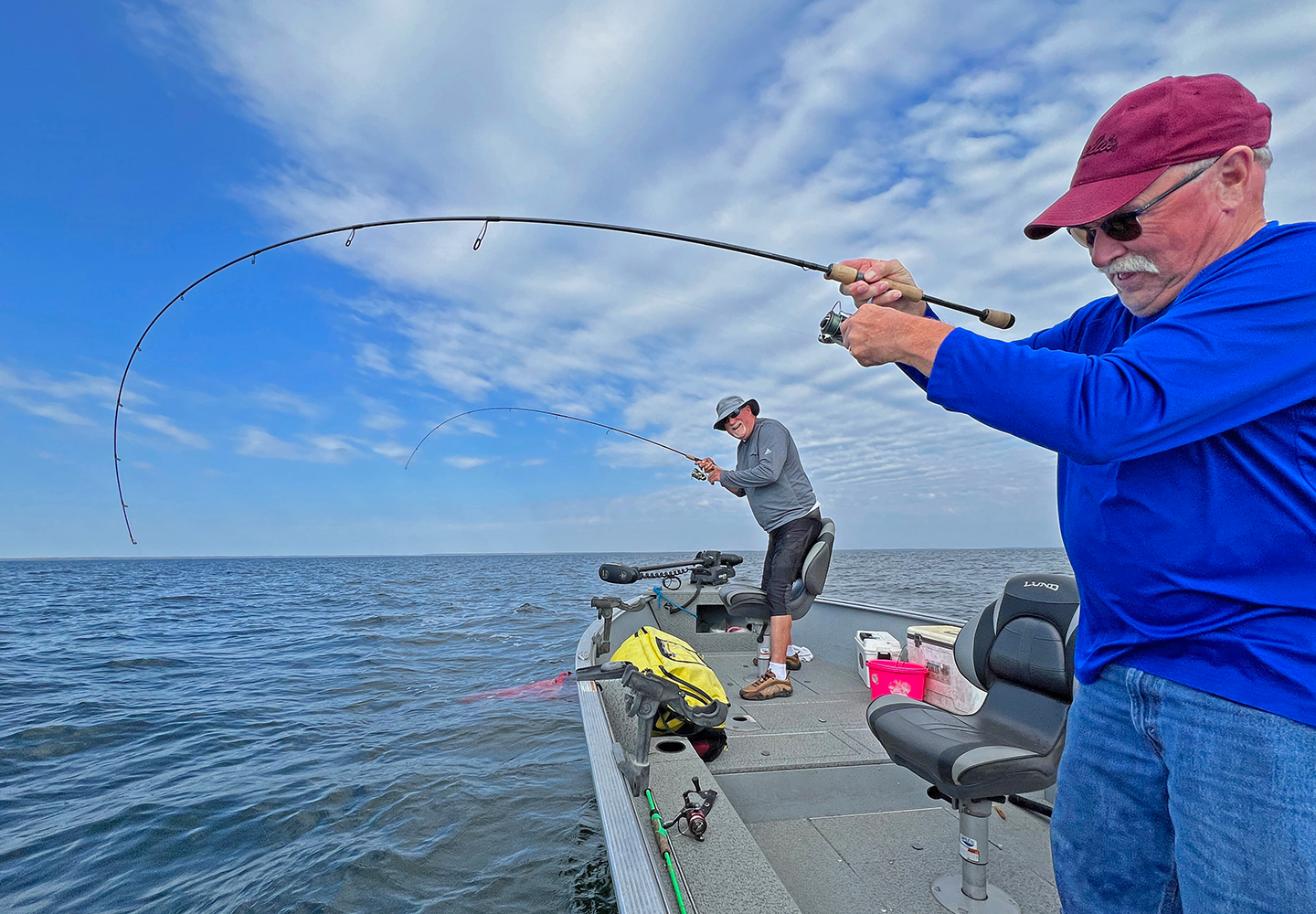 Also interesting was the intensity of fish activity on Lake Winnibigoshish. Last week, I fished with a group that comes up for 3 days every fall. For the most part, we caught fish on all 3 days, but they weren’t always the fish we were looking for.
Also interesting was the intensity of fish activity on Lake Winnibigoshish. Last week, I fished with a group that comes up for 3 days every fall. For the most part, we caught fish on all 3 days, but they weren’t always the fish we were looking for.
On Tuesday, we caught a number of walleyes that were in the protected, 18-to-23-inch protected slot by fishing in 16 to 18 feet of water. Looking for “eaters”, we moved to the shallows and caught small fish in 6 to 8 feet of water. We harvested what we needed for dinner, but the fish were not impressive. We hooked into numerous 12-to-13-inch fish that were released. Using a 14 inch minimum size threshold, we were only able to gather 8 so-called “keepers”.
On Wednesday, during the gale force winds, we found a massive school of perch. I’d estimate that they spanned a distance of ½ mile along the shoreline. On of the days, those fish will provide a lot of angling fun, but right now, they are simply too small to be of interest. We caught dozens of 6 to 8 inch fish and were teased occasionally by an almost keepable 9 inch fish. Moving away from that school, and searching for singles and doubles, we found a handful of keepers, but the action for them was much slower.
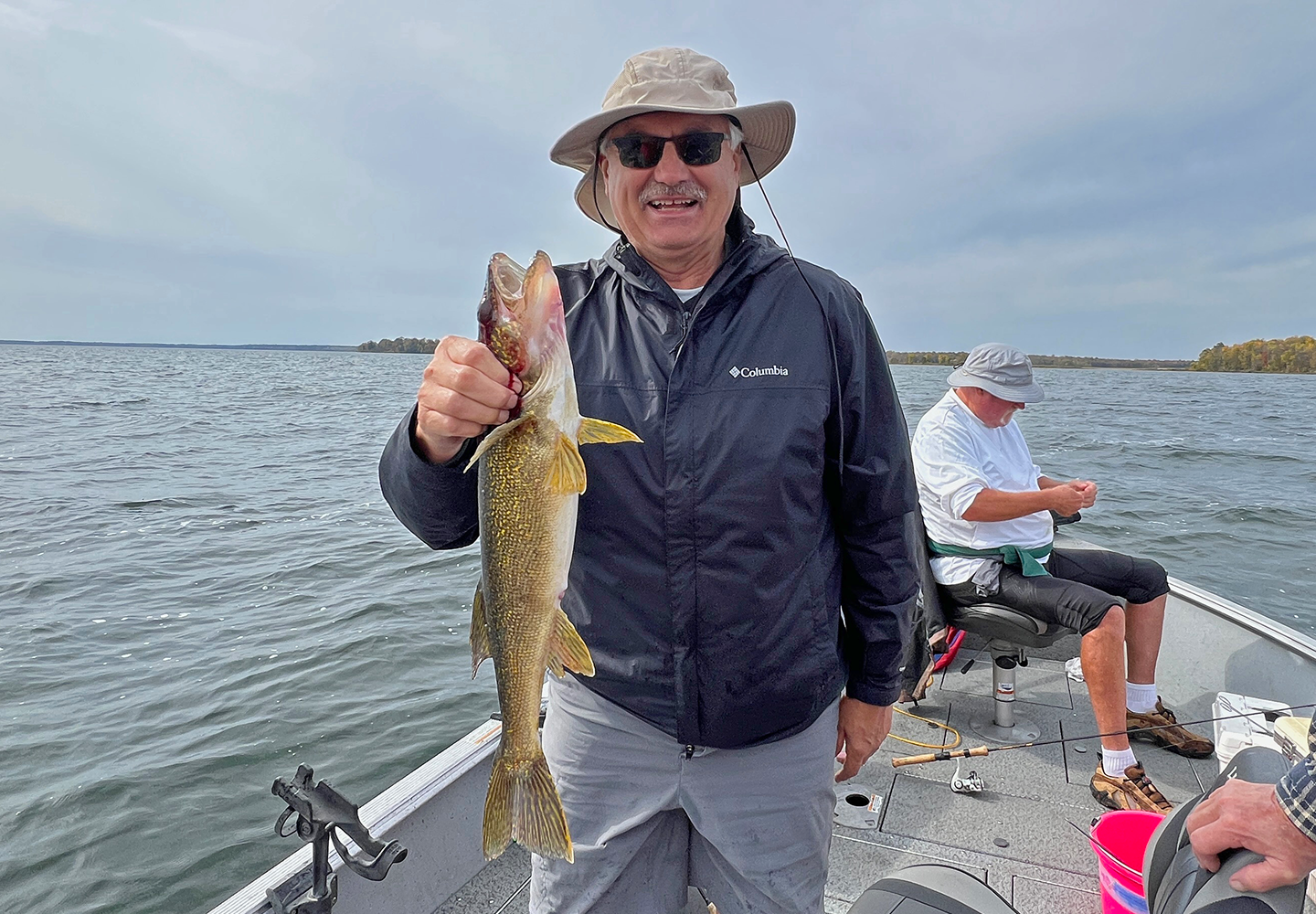 Later that day, I talked to a group of anglers in the fish cleaning shack while they cleaned what appeared to be a full 4-person limit of walleyes. Again, the fish were mot impressive, ranging between 13 and 15 inches, but for them, it was a good day. I did ask how that were caught, and they told me that they were jigging. They didn’t offer more details, and I didn’t press them for information. Still, it was an indication that when located, the fish are biting, we just have to cover territory to find them.
Later that day, I talked to a group of anglers in the fish cleaning shack while they cleaned what appeared to be a full 4-person limit of walleyes. Again, the fish were mot impressive, ranging between 13 and 15 inches, but for them, it was a good day. I did ask how that were caught, and they told me that they were jigging. They didn’t offer more details, and I didn’t press them for information. Still, it was an indication that when located, the fish are biting, we just have to cover territory to find them.
On Thursday, our goal was to catch and release larger walleyes. I returned to fishing on the shoreline breaks and focused on 16 to 20 feet of water. This plan came together; we caught and released upwards of 20 walleyes ranging in size from 19 to 23 inches. Jigs and minnows, along with Lindy Rigs and lively creek chubs were effective. Again, the fish were scattered, appearing on my graph as singles and doubles. But when I saw a fish, we could get it to strike, that’s the good news.
The bad news, for folks searching for keepers, is that this pattern will not work. For almost the entire day, we did not catch anything that qualified for the creel. At our last stop, we did catch a pair of 17-inch fish, which were an anomaly, I believe. This pattern, at least for now, appears to be workable only for those who can be content with catch, photo and release fishing only. Provided the fish remain on the shallow side of the breaks, I may do it again this week, but I suspect most of my customers will prefer targeting keepers.
Today, as the cold front closes in on us, and we receive another blast of strong winds, I plan to hide out on a smaller lake. I haven’t yet decided which one, but it will likely be someplace I haven’t visited recently. With luck, I’ll find them in a feeding mood, and have good news to share tomorrow, we’ll know that soon.
 I’ve been looking at my calendar and see that after this 8-day string of charters, I’m technically done for the season. But looking at the weather, and watching the water temperatures on lakes I’ve visited, I’m considering an extension. I’m thinking that I’ll use the surface temperatures to guide me, keeping the calendar open until water cools down to about 55 degrees. You, if you like, may be able to take advantage of the extension. If you’re thinking about making one more fishing trip this fall, let’s chat about the possibilities.
I’ve been looking at my calendar and see that after this 8-day string of charters, I’m technically done for the season. But looking at the weather, and watching the water temperatures on lakes I’ve visited, I’m considering an extension. I’m thinking that I’ll use the surface temperatures to guide me, keeping the calendar open until water cools down to about 55 degrees. You, if you like, may be able to take advantage of the extension. If you’re thinking about making one more fishing trip this fall, let’s chat about the possibilities.
Finally, more chatting about fishing is on my schedule for later this evening. Reel Talk Outdoors radio brings Tom Neustrom along with Larry Hanson to talk about all things outdoors. The program airs every Sunday evening on BOB Total Country, 105.5 FM St. Cloud, 106.1 Twin Cities, and 107.5 Faribault Minnesota. “Reel Talk Outdoors presents interviews with outdoors newsmakers, live call-ins, and stories to bring a new generation into the great outdoors,” their website proclaims.
I’ll be on the program tonight, from 7:00 to 8:00 PM with Neustrom, along with call-ins and other guests. We’ll be talking about current fishing conditions, predictions for this fall, forward facing sonar, year around bass fish seasons and more. Tune in, call in, or email your questions, we’ll get your concerns into the conversation. ![]() — Jeff Sundin, The Early Bird Fishing Guide Office Cell Call or Text 218-245-9858 or Email on Facebook on X
— Jeff Sundin, The Early Bird Fishing Guide Office Cell Call or Text 218-245-9858 or Email on Facebook on X
 Cutfoot Sioux and Lake Winnibigoshish Fishing Report October 3, 2025
Cutfoot Sioux and Lake Winnibigoshish Fishing Report October 3, 2025
 "It’s not easy talking about the end of our fishing season when the weather is warm, sunny and anything but fall-like. Still, the calendar tells us that it’s time to begin the wind down in preparation for winter. As we issue this final report of the fishing season, we want to be sure that you know how much we appreciate you for taking time to check in with us, thank you!
"It’s not easy talking about the end of our fishing season when the weather is warm, sunny and anything but fall-like. Still, the calendar tells us that it’s time to begin the wind down in preparation for winter. As we issue this final report of the fishing season, we want to be sure that you know how much we appreciate you for taking time to check in with us, thank you!
Over the past week, water temperatures have remained stable, locked into the middle of the 60-degree range. We see 65-to-66-degree readings at almost every stop on Big Winnie and in the Cutfoot Sioux chain, slightly warmer, reaching 68 to 69 degrees in calm, protected areas. Despite mostly sunny conditions, algae blooms are minimal, and in most regions, water clarity is on the rise. Secchi disk readings of 8 to 12 feet are common, but slightly dingier water can be found in shallow back bays and flowages.
Walleyes, perch and pike activity has generally increased, and at times fishing can be quite good. There are times though, like calm and sunny periods when fish activity can be slow. Even then, there is always someplace on the lake where the fish ..." Read Full Report >> Bowen Lodge Lake Winnie Fishing Report October 3, 2025
 Wired2Fish "Fall Bass Fishing – Beginner to Advanced"
Wired2Fish "Fall Bass Fishing – Beginner to Advanced"
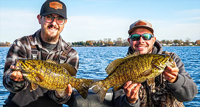 "When the first cool breeze of fall cuts across the lake, and the leaves start to drop, you can almost feel the bass waking up. After a long summer of sluggish days spent hugging deeper water, fall is the time when bass turn on the feedbag. Most anglers know how to catch bass in these temperatures, if they can find them. They sense winter creeping in, and just like deer putting on weight for the cold months ahead, bass go into a full-blown feeding mode.
"When the first cool breeze of fall cuts across the lake, and the leaves start to drop, you can almost feel the bass waking up. After a long summer of sluggish days spent hugging deeper water, fall is the time when bass turn on the feedbag. Most anglers know how to catch bass in these temperatures, if they can find them. They sense winter creeping in, and just like deer putting on weight for the cold months ahead, bass go into a full-blown feeding mode.
For fishermen like you and me, that means some of the best action of the year — if you know how to read the conditions, locate the fish, and present the right bait. I’ll walk you through how bass behave in the fall, where you can expect to find them, and which techniques work best to put fish in the boat.
In fall, bass are transitioning from deep summer haunts to ..." Read Full Article and Learn More >> Fall Bass Fishing Beginner to Advanced
 October 2, 2025 "Turning the Turn-Able"
October 2, 2025 "Turning the Turn-Able"
There are certain days when finding something to do is tricky. Yesterday, whitecaps formed, even on the calm shoreline of Lake Winnibigoshish. Driven by a blistering south wind, the offshore current activated fish, but many of them were simply the wrong ones.
We encountered a school of perch that ran along the shoreline for about a half mile. Yes, I said a half mile long school of perch. The same school of fish will be fantastic news if it happens in 2027, but in the current season, it wasn’t very impressive. Despite catching fish almost constantly, the school offered us mostly nothing in terms of “keepers”. Most fish ranged in size from about 6 to 8 inches, with an occasional 9-inch “almost-a-keeper” in the mix to tease us. If there were walleye or pike located nearby, the voracious perch simply beat them to our hooks.
Once we got away from that maxi school of mini perch, we were able to pick away at some larger ones, and a few slot-walleyes too, but for the most part adding fish to our larder was laborious. The closest thing we had to a good bite happened in about 8 feet of water, over low-lying weed growth. Jigs and minnows worked, so did trolling spinners. In the strong wind, drifting and jigging was easier to do than trolling, so we stuck with that.
Surface water temperatures held steady at about 65 degrees. Thoroughly mixed from top to bottom by the constant churning, the water was “turned over” in most of the lake’s littoral areas. The term littoral refers primarily to a lake’s shallower shoreline regions but could also include shallow mid-lake flats and bars. For Lake Winnie, this means that about 19,000 acres of water was mixed, or “turned over” by yesterday’s turmoil. Fish in those areas will spread far and wide for a time but will begin assembling again once the waters calm. So, for today, the plan is to figure out where we are on the timeline.
For me, there are still a couple of weeks’ worth of trips on the calendar. And if the weather stays warm, I may be interested in adding some more. If you’re thinking about squeezing in one lasty trip to the lake, let me know. We’ll see if there’s a date that interests you. ![]() — Jeff Sundin, The Early Bird Fishing Guide Office Cell Call or Text 218-245-9858 or Email on Facebook on X
— Jeff Sundin, The Early Bird Fishing Guide Office Cell Call or Text 218-245-9858 or Email on Facebook on X
 Ely Area, Arrowhead Outdoors Fishing Report October 1, 2025
Ely Area, Arrowhead Outdoors Fishing Report October 1, 2025
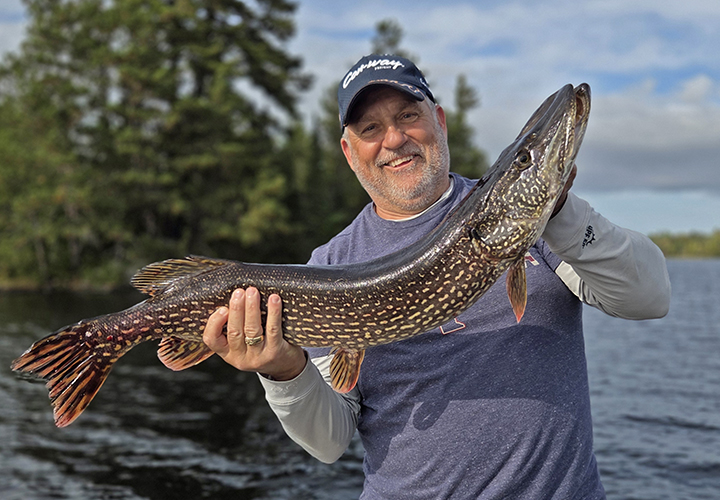 "Walleye - Summer like temperatures have walleyes moving up shallower than normal for this time of the year. 8 to 12 feet of water has been where anglers were finding lots of walleyes this last week. With water temps still reaching into the 70s, crawlers have been holding on but crankbaits, paddle tails, jig/minnow or jig/crawler have all been catching walleyes. Anglers have been finding walleyes out on sunken islands, main lake points and weedlines this last week. Wind has been the key to success here. Windy shorelines or the windy side of the structure has been best. Hot colors remain perch, gold and firetiger
"Walleye - Summer like temperatures have walleyes moving up shallower than normal for this time of the year. 8 to 12 feet of water has been where anglers were finding lots of walleyes this last week. With water temps still reaching into the 70s, crawlers have been holding on but crankbaits, paddle tails, jig/minnow or jig/crawler have all been catching walleyes. Anglers have been finding walleyes out on sunken islands, main lake points and weedlines this last week. Wind has been the key to success here. Windy shorelines or the windy side of the structure has been best. Hot colors remain perch, gold and firetiger
Smallmouth bass fishing to remain very productive, but catching huge numbers of big smallies has become challenging for anglers with these unseasonably warm temps. Small smallies have been plaguing anglers out on the sunken islands. Smallies out here, like the walleyes are being found in 8 to 12 feet of water. Spinnerbaits, crankbaits, drop shotting, paddle tails have all been very effective at catching large numbers of smallies. If your fishing humps and not catching numbers of smallies, you're fishing the wrong ones. Keep moving until you find the numbers.
Pike - Trophy pike fishing continues to be very productive for anglers targeting them. Again, like with the walleyes and smallies, 8 to 12 feet of water has been the depth to find them. Trophy pike have been cruising weedlines, mouths of bays and river mouths looking for an easy meal. Large suckers fished under a bobber have been very effective, but large swim baits, large spoons, and large spinnerbaits have all been catching big pike.
Panfish - Sunfish and Crappies have also been very active this last week. Both fish are being found working green weedlines but at different times of the day. Sunfish have been working weedlines and often inside the weedbeds during the day time hours. Redworms fished under a bobber have been very effective on them. During the last hour of light, the crappies slid up into the weedlines to feed. Anglers have had great success casting small jig/twisters along those same weedlines where they caught sunfish earlier in the day.
Stream Trout - Stream trout anglers reported that stream trout fishing slowed some this last week as water temps reached the 70s. Anglers noted that early morning and later in the evening were the best times to find stream trout more active near the surface. During these times anglers had luck casting small jig/twisters, small spoons or floating a nightcrawler about 5 to 10 feet under a bobber. As water temps rise trout slide down looking for cooler temps. During the day anglers have been having good luck floating a crawler about 2 to 3 feet off the bottom." — Arrowhead Outdoors, 218-365-5358
 Wired2Fish "Texas’ Big Bass Factory: O.H. Ivie Lake"
Wired2Fish "Texas’ Big Bass Factory: O.H. Ivie Lake"
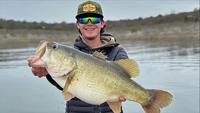 "Dalton Smith remembers the dreary December day in 2022 when he discovered just how special O.H. Ivie Lake is.
"Dalton Smith remembers the dreary December day in 2022 when he discovered just how special O.H. Ivie Lake is.
Fishing with a friend on the reservoir in west-central Texas, he caught the fish of a lifetime – a 14.59-pound Florida strain largemouth bass. That in itself was reason to celebrate. But after taking a lunch break, Smith landed a second bass weighing more than 14 pounds. Two giants, in one day!
“It was overcast and rainy, and those bass were just roaming the river channel, feeding on shad,” Smith told Wired2Fish. “I saw them on my forward-facing sonar, and I got both of them to hit a swimbait. “I doubt if I will ever have another day like that.” But at O.H. Ivie Lake, one of the top trophy bass lakes in the country, anything is possible. Smith, who guides on the lake, is a believer. No one bats an eye when someone catches a 10-pound bass at the ..." Read Full Article and Learn More >> Texas’ Big Bass Factory: O.H. Ivie Lake
 Lake of the Woods, LOW Tourism, October 1, 2025
Lake of the Woods, LOW Tourism, October 1, 2025
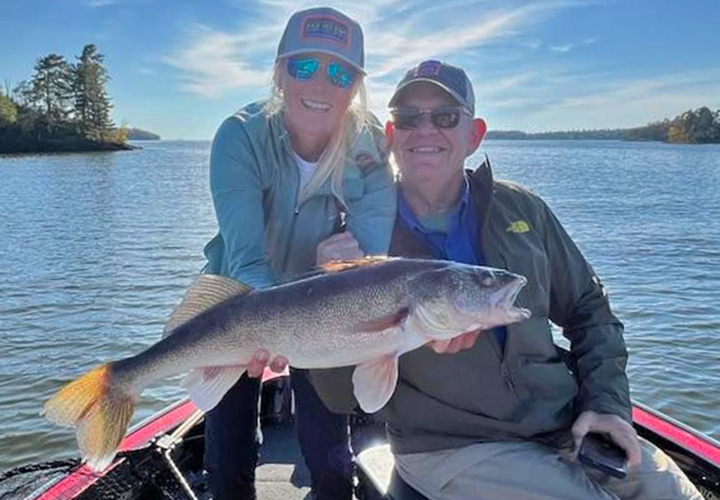 "Walleyes continue to congregate along the south shore of Lake of the Woods. Despite unseasonably warm weather, anglers are putting good numbers of fish in the boat.
"Walleyes continue to congregate along the south shore of Lake of the Woods. Despite unseasonably warm weather, anglers are putting good numbers of fish in the boat.
The best bite has slid slightly deeper this week to 22 to 30 feet. Vertical jigging with a frozen emerald shiner remains the top producer. Hot jig colors have been green, gold, orange, chartreuse, and glow white; on certain days, pink or plain gold still shine.
Schools of walleyes are located across traditional stretches, Pine Island, Lighthouse Gap, Morris Point, Zippel Bay, Long Point, and Twin Islands, with bonus jumbo perch mixed in. While jigging is the go-to, some anglers continue to pull spinners with crawlers or troll crankbaits to cover water when marks are scattered. Expect shoreline activity to strengthen further as temperatures cool.
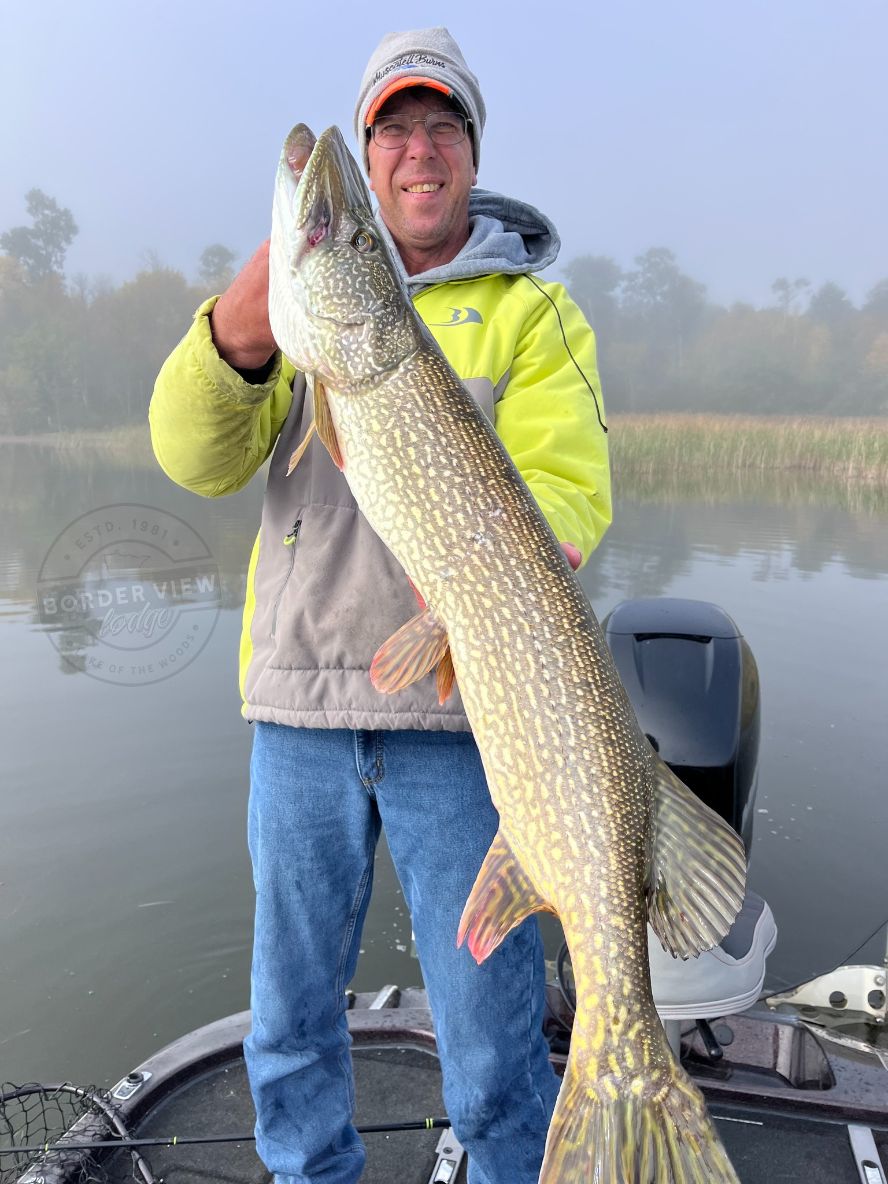 On the Rainy River, Emerald shiners are trickling into the river, and walleyes are following. The bite is improving by the day; a real cool-down will kick things into high gear. Work a jig and frozen shiner along current breaks, deeper holes, and sand flats.
On the Rainy River, Emerald shiners are trickling into the river, and walleyes are following. The bite is improving by the day; a real cool-down will kick things into high gear. Work a jig and frozen shiner along current breaks, deeper holes, and sand flats.
Sturgeon action remains strong. A classic sturgeon rig with crawlers (optionally tipped with a shiner) has been effective. Reminder: sturgeon harvest season is open through September 30, 2025, switching to catch-and-release October 1, 2025 thru April 23, 2026. The Rainy River offers about 42 miles of navigable water from Wheeler’s Point through Baudette to Birchdale, with numerous public ramps for access.
At the Northwest Angle, excellent walleye fishing continues on both the Minnesota and Ontario sides. The program is simple and productive: a jig and minnow on points, over reefs, neck-down areas, and mud-to-rock transitions. Saugers, jumbo perch, and pike are also showing up consistently.
It’s prime time for fall crappies. Many anglers are finding nice fish around islands and off of points. Muskie reports are strong as water temps edge downward, with follows and hookups on shoreline structure.
Plan your fall trip, excellent fall fishing typically runs into November. If you’re looking for that last good open-water trip before ice season, now’s the window." — Lake of the Woods Tourism, (800) 382-FISH
 Wired2Fish "Cody Huff’s Fall Fishing Strategy"
Wired2Fish "Cody Huff’s Fall Fishing Strategy"
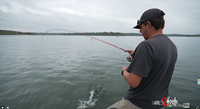 "Fall fishing often means unpredictable conditions and fast-changing patterns. Professional angler Cody Huff shows how he adapts his fall bait rotation to cover water efficiently and stay in tune with bass movements. Huff demonstrates how speed, bait choice, and versatility become crucial when fish are scattered.
"Fall fishing often means unpredictable conditions and fast-changing patterns. Professional angler Cody Huff shows how he adapts his fall bait rotation to cover water efficiently and stay in tune with bass movements. Huff demonstrates how speed, bait choice, and versatility become crucial when fish are scattered.
Offshore and Mid-Depth Adjustments: Fall doesn’t always push bass shallow. Huff also explains how suspended fish often relate to bait schools in open water. To tempt these roamers, he rotates to minnow-style baits on various jig heads, adjusting weight and presentation speed to match fish behavior. This flexibility ensures he can connect even when the shallow bite fades.
Docks, Laydowns, and Heavy Cover: Not all bites come from roaming fish. Huff flips compact jigs into ..." View Video to Learn More >> Cody Huff’s Fall Fishing Strategy
You Are Invited To Become A Duly Deputized Fishrapper Cub Reporter Too!
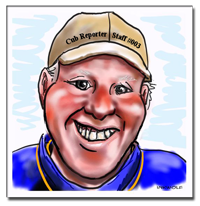 If you've been waiting for a gold engraved invitation to participate in the daily reports, then stop waiting and consider this your own personal invitation.
If you've been waiting for a gold engraved invitation to participate in the daily reports, then stop waiting and consider this your own personal invitation.
Helping your fellow fishermen and women stay abreast of fishing conditions in your area is good for everybody and it's easier than you think! You don't have to write a book, you don't have to share your secret fishing spots and you don't even have to mention your lake. You see, with just a few words about general trends, seasonal patterns or local weather conditions you can help steer your fellow anglers to more gratifying fishing experiences. So, be like Dan and Sean, and become a duly deputized "Cub Reporter", it's good for fishing and that's good for everybody!
Use the Contact Us page, or if you prefer to be "social", use our community page on facebook Fishing Reports Minnesota, that is the Facebook counterpart to this page and it is open to the public, so you can post your own fishing update or just share a photo of a nice catch.